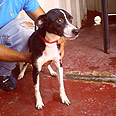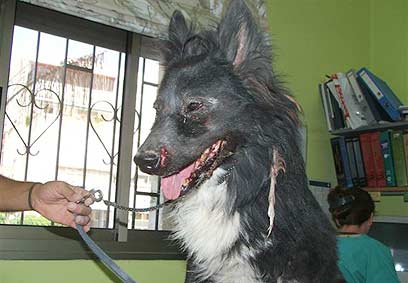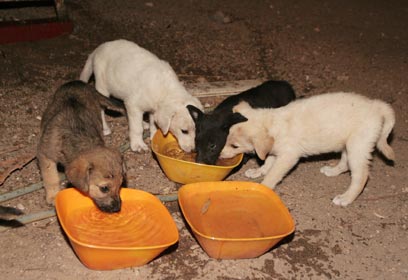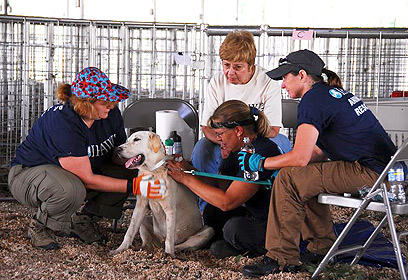
Not without my pet: Animal evacuation during crisis
The dilemmas pet owners face during times of emergency became apparent in Second Lebanon War, when many refused to evacuate their homes because of their animal, while others abandoned it when forced to leave. This proves need for national evacuation plan for pets
Disasters, representing a threat to society, man and animals alike, have many sides. In the Second Lebanon War two contrasting phenomena were noted. On the one hand, families and individuals refused to evacuate without their pets. On the other hand, however, there were many people who abandoned their pets without providing a proper solution for them in order to save themselves. The war thereby emphasized the huge difference in attitudes - both positive and negative - of people towards their pets.
- For the full article, click here
Human-animal relations
Human-animal relations encompass various substantial mental and emotional needs, including social support, a reduction in the negative impact of stress in crisis situations, the animal's role as a substitute image for a child or adult (it is there for its owner unconditionally), attachment as a psycho-biological mechanism that provides a sense of security, non-verbal communication and understanding, or a transitional object.
The relationship between an individual and their pet is complex and influenced by many variables, thereby constantly changing. Social, economic and cultural factors in different parts of the world influence the human-animal relationship and determine how the animal is perceived by its owner (as a friend, a family member or as a source of livelihood like cattle, sheep or poultry). It is noted that 100% of households in the US that own a pet, consider it a part of the family.
Understanding the tight connection ("as a member of the family") may explain the ‘refusal to evacuate’ phenomenon, or the reason for sometimes returning to the scene/disaster area in order to save the pet, despite life-threatening situations.
Family evacuation failure
In 1992, Hurricane Andrew left many people and animals without shelter. The result was an obvious need to take animals into consideration when making emergency plans. The concern for the animals became a critical factor in the emergency program, in light of the fact that people's needs were tightly bound with those of the pets they owned. For this reason Florida was the first state to present a solution for animals in its disaster readiness plan.Shortly after, in 1993, the veterinary services were united with the Federal Bureau that deals with the readiness for disaster plans, in order to establish SART (State Animal's Response Teams). These teams were trained and equipped for several scenarios (natural disasters like floods, hurricanes etc... as well as man-made disasters
Recognizing the importance of the human-animal bond is highly significant and, therefore, should be taken into consideration during the planning and implementation stages of disaster management
In the US, the proportion of the population that owns a pet to that without pet is enormous - over 50% of the households; therefore, failure to evacuate this large group can be critical in a time of crisis.
While in Israel the percentage of households owning a pet is less, after the Second Lebanon War it has become clear that this sector of the general population should not be ignored. The attention given by the media to eviction refusal by pet-owning households, or the phenomenon of abandoning the animals, made a large impact on public awareness of the issue and highlighted the need to find a solution.
Failing to evacuate
There are many ramifications to the fact that animals are not always evacuated from disaster areas. While we should not forget that during a disaster our first obligation is to save and rescue people, from a humanitarian point of view we must also not abandon the animals at the scene. Studies have shown that households that have treated their pets responsibly, continue to do so in times of crisis. Households that took their pet to the vet regularly, vaccinated and registered it, had higher evacuation rates. 
The dog Hetz – hurt by Katyusha during Second Lebanon War (Photo: Let the Animals Live)
Households that tried to save their pets were generally families with children and several pets, in contrast to households that made no effort to rescue their animal. One explanation for that includes their misjudgment of the seriousness of the event, or the lack of available proper evacuation instructions.
Abandoning pets
The high frequency of failure to evacuate pets from different disaster scenes, indicates that the abandonment phenomenon is also common in everyday life and is not necessarily correlated to a lack of advance notification, or the dog owner's absence. 
Puppies abandoned during the war (Photo: Avi Hirschfeld)
The ratio between animals that are abandoned during crisis and disaster times and to those that are abandoned in normal times is the same. Therefore, the study suggests that there is a sub-section in the population of pet owners that will forsake their pets at one time or another, and that disaster merely accelerates the process.
The study suggests several factors that may predict abandonment: a family with a weak human-animal bond, the pet does not live inside the home, and little effort is made in caring for the animal (such as regular visits to the vet).
Why a readiness plan is needed
Family and community preparations and readiness plans have not been sufficiently prioritized by the government in Israel, despite its having faced many crisis situations in the past. This has been due to the fact that over the years the matter has been solely the responsibility of the IDF, which also included handling the home-front population in accordance with previously established procedure.
The Intifada, the Gulf War, the First and Second Lebanon Wars, all changed the patterns of combat, including affecting the home front.
Crisis situations were now experienced by civilian population centers, and the contingency plans did not fit the real needs of the citizens.

Helping animals in crisis zones (Photo: IFAW / M.Booth)
The Second Lebanon War clearly proved that the local authorities play an important and crucial role in determining the public-civilian agenda during a time of crisis.
The "Absence of Sovereignty" was one of the main failures that occurred according to many reports that were published after the Second Lebanon War. In general, the State was not available to its citizens in their time of need and felt itself exempt from being so. Most of the government offices closed when the war started, without giving any notice, explanation, or providing a proper substitute.
Pet-owner survey
This article engages with providing an appropriate solution for pets in times of emergency. We thus chose to ask pet owners for their views regarding the treatment of animals during a time of crisis.
A questionnaire was distributed to pet-owning households, mainly in the north of Israel. A total of 115 questionnaires were collected. 109 of them were filled in by dog owners and 6 by people who own cats.
Some of the main conclusions:
- It is without doubt clear that the majority of the population treat their dog/pet like a member of the family, irrespective of any variables such as sex, age, living area, family status, number of children or children’s age.
- The tighter the bond between the human and the animal, the greater the probability that the animal will reside inside the family home.
- 26.6% of those surveyed did not evacuate their home since there was no proper solution for their pet.
- 63.4% of those surveyed, who did evacuate their home, had to do so without their pet. Since they did not want to leave the pet inside the house, they set it free (66.7%) without food or water (20%). These findings show the hard reality of families owning pets during the Second Lebanon War, and reinforce the discussed phenomenon of abandoning pets with no food or water.
Humane duty
The main conclusion of our study emphasizes and characterizes a sector of the community that is differentiated from the rest. This difference requires a special approach in the emergency readiness plans, just as other special needs populations require.
Since pet-owning households are a heterogeneous group, it is necessary to provide several possible solutions that can provide alternative answers to the issue.
For the time being pet owners will have to seek individual solutions for their animals during a time of crisis, such as "animal friendly" guest houses, animal shelters or veterinary quarantine facilities.
It is our humane duty to construct community evacuation and readiness plans that will take into consideration the population of animal companions. These plans should include the developing of emergency support plans, increasing awareness, increasing the number of "animal friendly" shelters, training volunteers to work with rescue teams, and more.
One of the lessons learned from the Second Lebanon War is the need to recognize the need for a national organization that will focus on preparing and dealing with various emergency situations.
"Changing patterns of population evacuation in times of emergency for pet-owning families," Hagit Less, Haim Levi
The full article was published in Animals and Society
To contact Animals and Society: [email protected]
Translation: Liat Reuven










